The OWIL is engaged in research on:
Our current research interest focuses on design of network coding protocols and evaluation of the benefits of network coding in cooperation communication networks. Cooperation communication techniques, in which multiple users share their physical resources to create a virtual MIMO system for transmitting their information, has been widely acknowledged as a promising diversity technique to combat wireless fading. The integration of network coding and cooperative communication has attracted significant interest. We aim to design a network coded cooperative protocol with high reliability (lower symbol error rate). We are currently focusing on multi-user uplink scenarios.
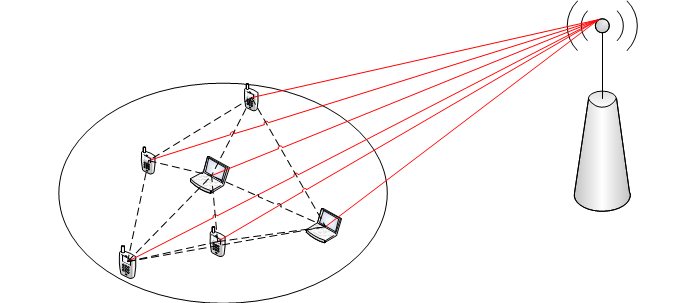
Allocation of resources in OFDMA networks includes power, subcarrier and time slots.
Based on objective of the problem, we may have the margin adaptive (MA) that deals with minimizing total transmission power while satisfying QoS requirements of users, or rate adaptive (RA) problem which maximizes throughput subject to constraint on maximum total transmission power, while satisfying user’s QoS requirements.
As there is always a trade-off between efficiency and fairness, algorithms must be designed carefully.
While most of the solution approaches try to provide efficiency, fairness among users also needs to be considered. Optimization and game theory can be used as mathematical tools for implementing the desired approaches.
While optimization theory tries to address the problem in an efficient and centralized manner, game theory takes into account the fairness issue in a distributive approach. Cooperative game and auction theory are two candidates which address the problem of efficiency and fairness, respectively.
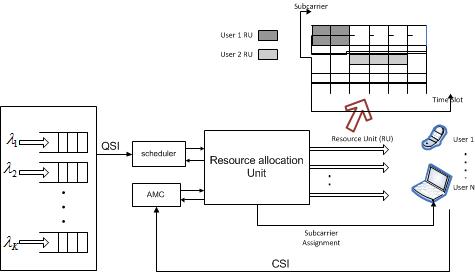
Figure: OFDM Resource allocation
Multiple-input multiple-output systems can improve the performance of the wireless networks by achieving multiplexing and diversity gain. Multiplexing gain leads to the higher data rate while diversity gain results in less bit error rate. However, there is a fundamental trade off between these two gains. There are several issues which can be addressed in designing the algorithms for MIMO systems. Feedback limits and computational complexity are two of the main problems.
In our research, we are trying to address these problems and to propose algorithms with lower computational load and/or higher bandwidth efficiency. Besides the available feed back bandwidth, feedback error and delay are also limiting the performance. These drawbacks will be taken into account in later stages. We are working on MIMO systems in general and MIMO-OFDM in specific.
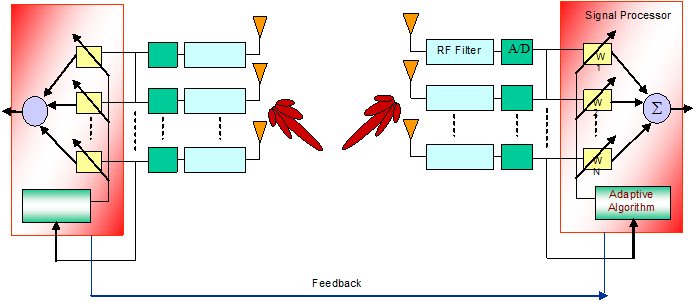
The smart grid specifies the addition of intelligence, two-way digital communication and bi-directional power flows to the power grid to significantly improve system reliability and security, achieve real-time granular network performance feedback, improve energy efficiency and utilize distributed power generation.
The Illinois Institute of Technology (IIT) is deploying a campus- wide smart micro grid called the IIT Perfect Power System. This system will integrate smart grid and building automation concepts, and its primary goal is the improvement of campus power system reliability, efficiency and environmental impact, while satisfying energy demand in terms of quality and quantity 100% of the time.
The IIT Perfect Power system is the first deployment of the Galvin Electricity Initiative (GEI) Perfect Power infrastructure . This system will increase substantially the use of distributed resources for supplying power to the university during peak load periods as well as during emergencies while providing necessary ancillary services in support of the local utility electric distribution system.
Our research involves the development of Zigbee/WiFi interference detection and mitigation techniques to improve Zigbee performance within Smart grid environments. We are also developing customer-oriented demand response algorithms/techniques to enable electricity customers to harness potential savings and resource efficiences that the provision of real-time pricing will afford.
We are also investigating the utilizarion of optimal stopping rules as a novel residential appliance scheduling algorithm to minimize the energy cost while satisfying energy and timing requirement. Several issues including power constraints and fairness are also considered.
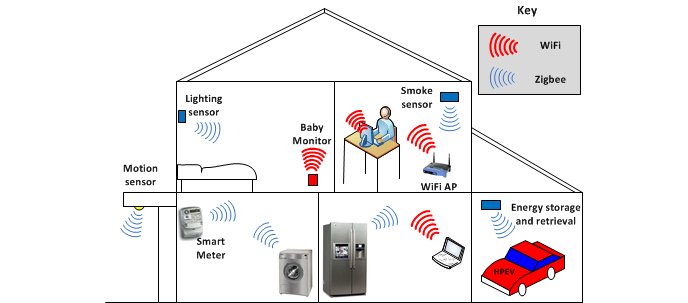
Figure: Zigbee/WiFi device collocation
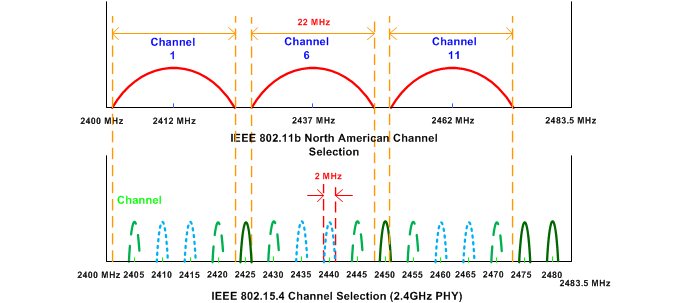
Figure: Zigbee-WiFi frequency allocation